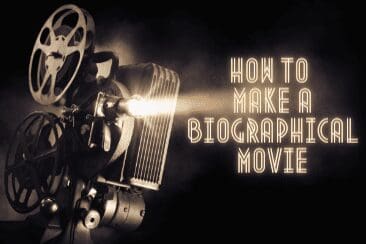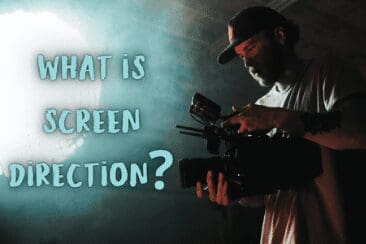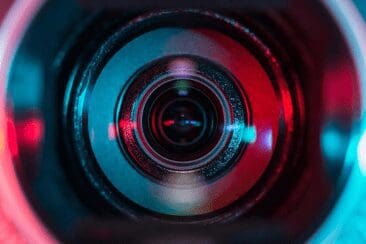Are you seeking to broaden your knowledge of film composition? If so, welcome – you have come to the right place!
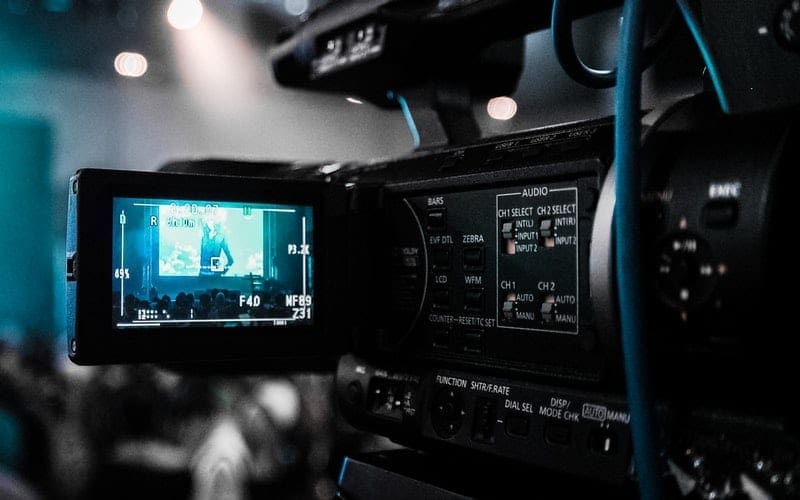
It’s actually a pretty interesting topic to get your teeth into. As we will come to discover that it’s of vital importance when it comes to making successful movies.
We will define what film composition is, how it works in film and provide you with some good examples of film composition. As well as finally go over some techniques for you to take away and hone your skills.
Sound good? Then make sure that you keep reading for everything you need to know concerning film composition!
What Is Film Composition?
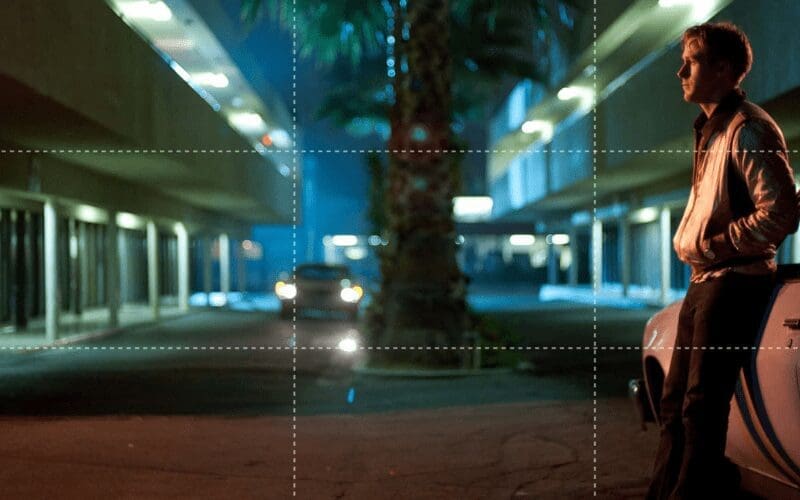
So, what is film composition?
Put simply, it’s all about the way a scene is arranged within the camera frame. When referring to shot composition, it’s all about the way the visual elements are arranged to convey a certain message.
When we refer to the elements on the screen, we are talking about the props, the scenery, and the actors themselves. Fun fact: in the early days of filmmaking the film composition resembled a stage play!
You see, everything that the audience needed to see faced them, and takes would be far longer than they are now.
Plus, the camera would rarely move. With the most common shot being a wide shot.
Composition and framing in film are now much changed for the better. So, what is framing and composition in film?
Now that there are better techniques and technology available, filmmakers realize that they can influence the audience far better if they can seamlessly move the camera and move the characters into a three-dimensional depth.
This lessened the look of a stage play and allowed the characters movements to appear more true to life.
This is why film composition is a vital element in the creation of a movie. As it can grab the attention of the audience by directing their attention to a certain person or object. As well as help to create beautiful-looking imagery.
Finally, it also allows filmmakers and directors to successfully get across important information and subtext. Through the elements of composition in film, deeper meaning can be successfully conveyed without needing to tell the audience exactly what’s going on.
After all, this is part of the enjoyment of films – they can keep you guessing as to what’s going to happen next!
Rules Of Composition In Film

So, what are the rules of composition in film?
Let’s dive in!
Rule Of Thirds Film Composition
A good place to start is the rule of thirds film composition, as this is one of the most important techniques to master.
It has the power to greatly improve the quality of your filmmaking. You need to break up your frame into six sections – three horizontal and three vertical. Then all you need to do is place your subject at one of the interconnecting points.
This is all you need to remember! The whole point of this rule is to create an asymmetrical image. This enhances the naturalness of your shot as it mimics pure landscape imagery.
In addition, this will make the shot more pleasing to the audience (which is, after all the end goal!) as it will feel more natural to look at.
There are also some other rules to familiarize yourself with, let’s dive in!
Balance & Symmetry
The subject looking to the opposite side of the frame is also a rule of consumption in film. You see, in general, the framing rule sees the subject on the left side of the frame with them looking to the right.
However, if you wish to convey a different message then it’s time to switch things up a bit!
This can help to create a whole different feeling and mood. The subject can focus their gaze on the same side that the frame is, and this can encapsulate the mood of entrapment, for example.
Framing At Eye Level
Framing at eye level can also be considered a rule of composition in film.
This rule can completely change the tone of the shot. It creates a sense of kinship between the subject and the viewer and also creates a feeling of equality.
You can also reverse this and film from below the subject, as this can create the opposite effect and assert a feeling of dominance over the audience.
Medium Shots
In terms of medium shots, there’s a rule to leave a small section of a room in the shot above your subject’s head.
In close-up shots, you can remove a small portion of their forehead, while still leaving their chin within the frame.
180 Degree Rule
Finally, we’ve come to the 180-degree rule of film composition.
This rule basically refers to connecting all of the characters that are present in the scene. The camera should be placed on one side for every shot. Meaning that the first character is the frame right of the second character.
This type of shot can help to maintain the continuity of the scene and ensure that the eye lines are comfortable and natural for the observer.
Composition In Film Examples
In this section of the article, we’re going to check out some compositions in film examples.
This is always a good (and practical) way of understanding the techniques and how they can greatly influence a film!
The Birds (1963)

This Alfred Hitchcock thriller is a good example of the diagonal composition technique in film.
Check out the still below from the film. It certainly draws the eye in thanks to the contrast of colors. The sky is fairly bright blue, and this makes the birds on the wire stand out.
If the wire was to run horizontally over the image it would bring an atmosphere of calm to the still.
However, due to the diagonal line, the eye can immediately tell that something is not quite right. This helps to create an atmosphere of unease and highlights the importance of getting simple film composition techniques just right.
After all, this helps to contribute to the success of the movie – as it helps to set the ominous tone.
Nightcrawler (2014)
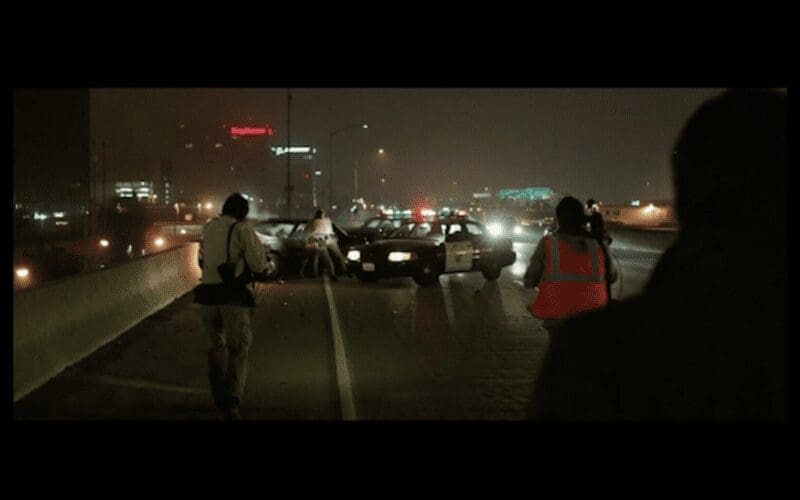
This movie is a great example of how to successfully use leading lines (more on this below!).
Take a look at the image above. The leading lines technique is leading the audience to the scene of the accident. As there is a diagonal line beginning at the character Lou’s feet that travel to the wheels of the police car.
It also demonstrates what the camera is capturing during the shot. There’s also a straight line tracing the movement of the character. Both lines work together to help frame the shot and direct our attention to the goings-on.
What this film also does well is make use of the eye-level shot, as this demonstrates how Lou is feeling. Additionally, it helps to elicit some sympathy for him despite his anti-hero status.
Mission Impossible: Fallout (2018)
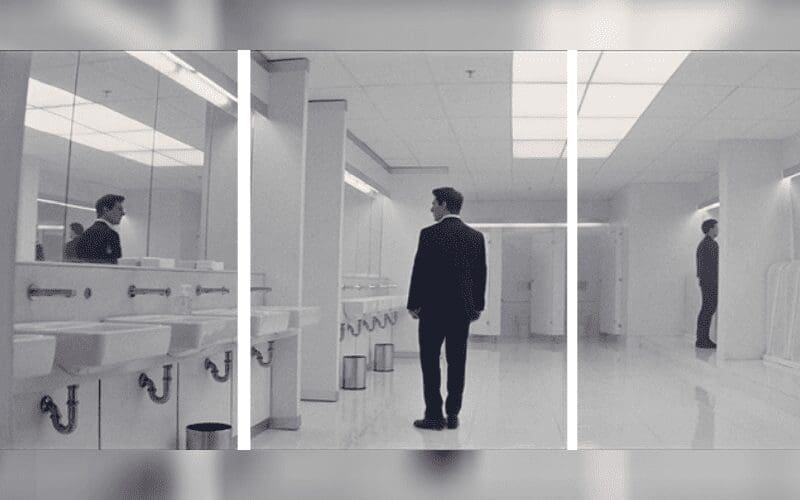
The rule of thirds: so many films in modern cinema have made use of the rule of thirds, let’s take a look at some of the best examples of this.
During the movie Mission Impossible: Fallout the character of Ethan Hunt is always at the center of the action, with the most memorable scene being him leaping over rooftops in the pursuit of someone.
The rule of thirds is used to maintain the pace and excitement of the scene. It’s worth noting that the rule is broken in this scene to show the surrounding area around Ethan, but it is just as effective and makes for an iconic action sequence.
The Avengers (2012)

Another great example of the rule of thirds in the film is from the action film The Avengers when Thor picks up his mighty hammer.
This scene helps to add to the increasing tensions as well as further the story itself.
Titanic (1997)
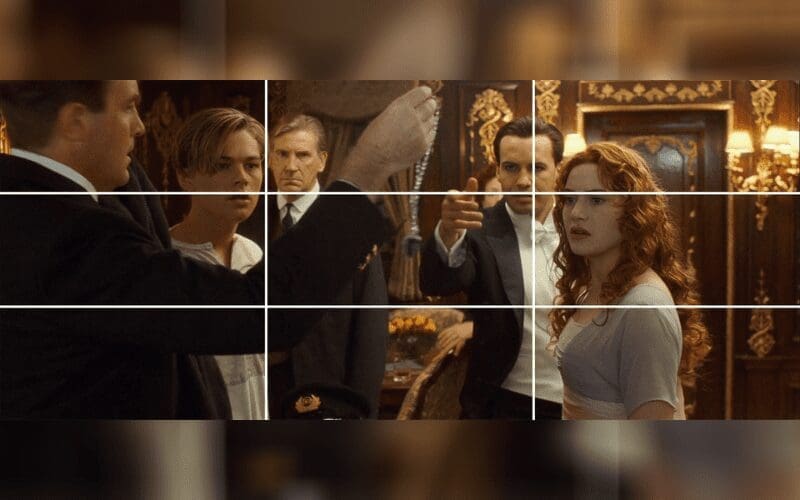
Finally, the film Titanic also makes good use of this technique. A prime example is the scene where the necklace is found in Jack’s pocket.
The rule of thirds allows your focus to shift from the expressions on the characters’ faces, as well as shifting to the objects (the necklace) when needed.
What’s more, it helps to promote the harmony of the shot. As although a lot is going on it doesn’t feel busy or overcrowded.
Composition Techniques In Film
Now it’s time to cover some of the composition techniques in film that you can get started with!
Leading Lines

Let’s kick things off with the leading lines technique.
This technique is referring to both actual lines and imaginary ones, that help to lead the viewer’s eye to the key sections of the scene.
Filmmakers primarily use this technique to help guide their audience to where they should be looking. But it can also be utilized to connect your character to vital objects, characters, or situations.
So, the next time you watch your favorite film think about where your eyes are drawn to on the screen.
It’s probably no coincidence that your gaze has come to rest there. As it’s likely all down to the clever technique of leading lines.
Deep Space Composition
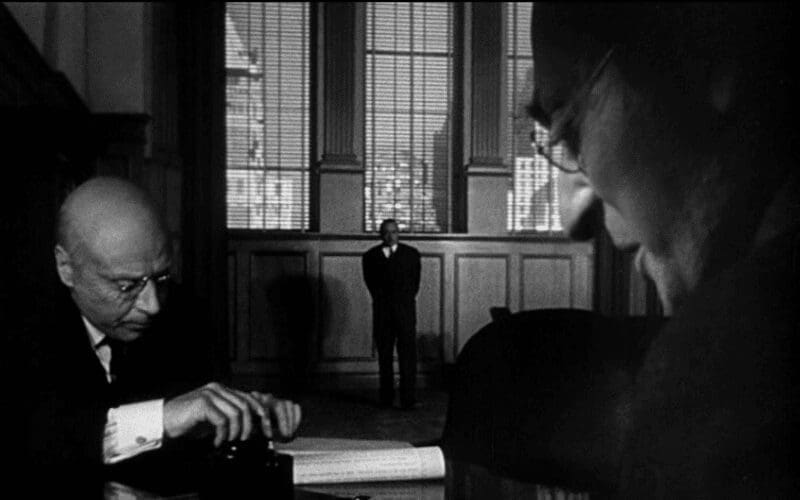
So, what’s deep space composition?
Filmmakers use it when important elements in a shot (or scene) are both far away and near to the camera.
These elements don’t need to be in focus to count as this technique. In comparison to the deep focus technique where all the elements on screen are in focus. No matter if they are close or far away from the camera.
Deep space composition is extremely beneficial to filmmakers as it can capture the mood of a group of characters, and the different depths can help to convey this.
Depth Of Field
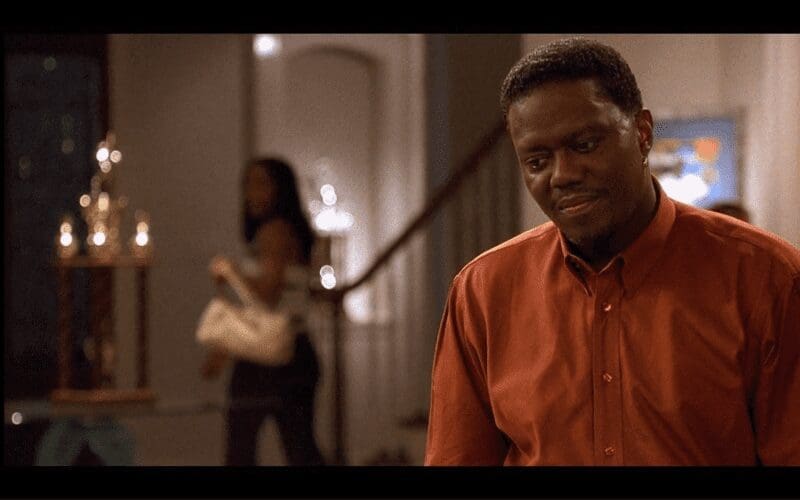
Understanding and applying depth of field is vital to making good-quality films. So, what do we mean by depth of field?
It is referring to the size of the image in your shot where your objects are sharp. The size of the sharpness is the depth of the area and the area is referred to as the field. Simple enough!
Think of it as the area of sharpness. If you wish to make more of your objects appear sharp and in focus then you will need to extend the zone.
On the other hand, if you decide to make the zone smaller then your depth of field will become shallow. This is such a brilliant way of promoting different tones and feelings in the audience.
So, how do you manipulate an image? One popular technique is rack focus. This refers to altering the focus during the shot. This can be both a large or small alteration of focus, depending on what you are trying to convey.
This technique will be far more recognizable if the focus is shallow, so keep this in mind!
Being able to effectively use this technique will be extremely beneficial to your film. As it can be vital to conveying your visual storytelling as it allows the characters and other objects to take center stage.
That Was Our Guide On Film Composition
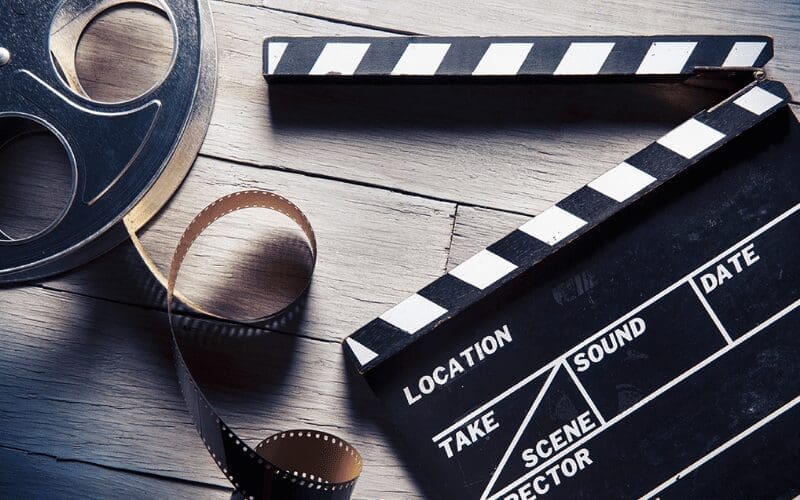
So, there we have it, our complete guide to film composition!
We hope that this article has broadened your knowledge of the topic and that you feel ready to take on your next project!
We would recommend learning the rules of film composition and the techniques of film composition. They can significantly improve the quality of your film. As well as help convey successful visual storytelling!
However, it’s also important to remember that these rules and techniques are not official ‘rules’ to be followed. After all, rules are made to be broken!
Think about what your shot requires. As if you choose to simply blindly follow the rules it could result in your shot conveying a mood or tone that doesn’t suit what’s going on.
Top Tip: check out some of your favorite films and look out for these techniques and rules to help get a feel of how the techniques influence your feelings. As well as what sections of the screen you’re drawn to.
Plus, it’s just a good excuse to re-watch your favorite movies!
So, what are you waiting for? Begin your filmmaking journey today!
Now that you have learned all about film composition, why not check out some more of our amazing articles? Such as Famous Movie Composers, Best Camera For Filmmaking On A Budget, or Film Schools 101!






